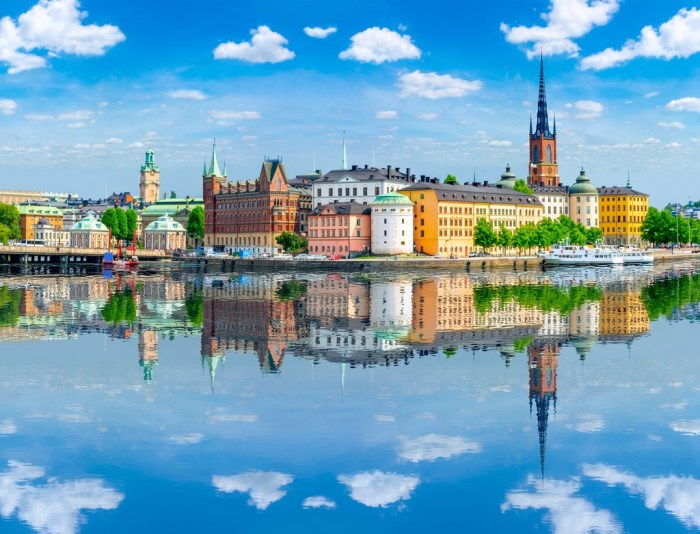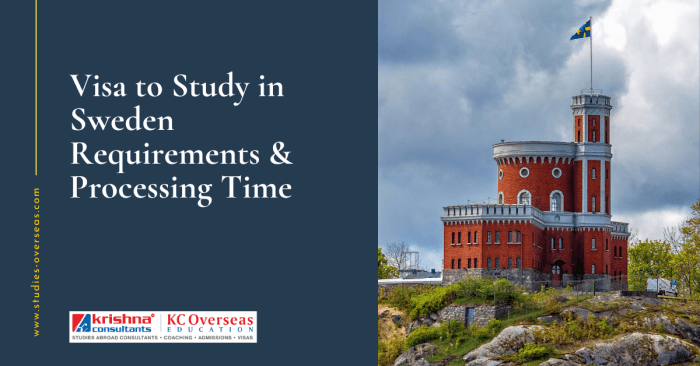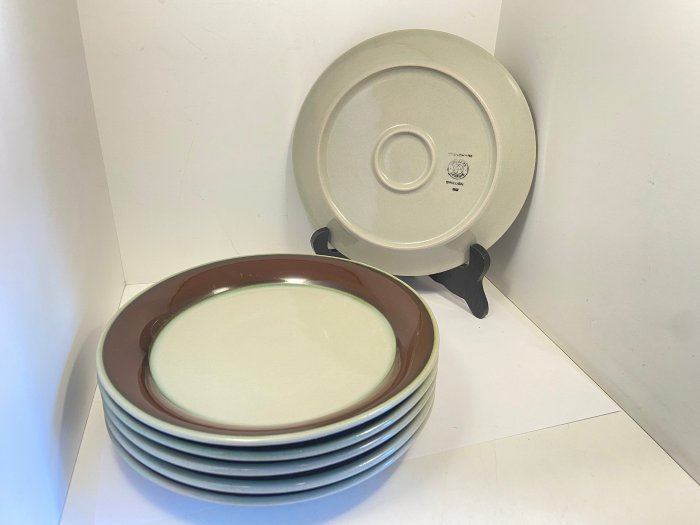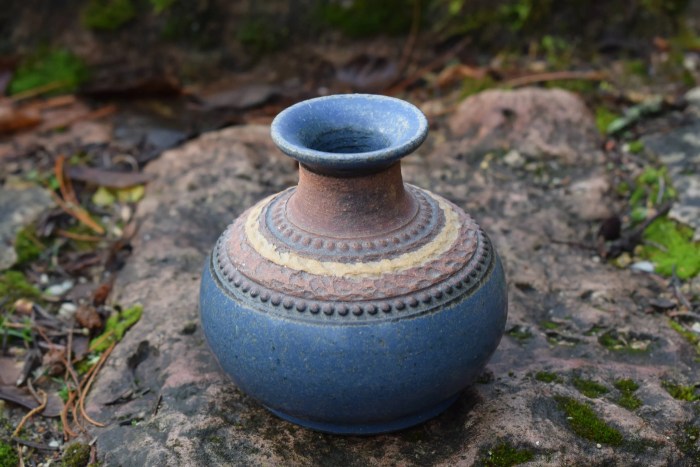Sweden treehotel newest room is made up of 350 bird boxes – Sweden Treehotel’s newest room is made up of 350 bird boxes, a truly innovative and awe-inspiring design. Imagine waking up to the symphony of nature, surrounded by a breathtaking array of birdhouses. This unique structure isn’t just a hotel room; it’s a testament to sustainable design, blurring the lines between human comfort and the natural world. The integration of these bird boxes into the room’s architecture is both fascinating and practical, promising a truly memorable experience for guests.
This innovative design delves into the interplay of architecture, sustainability, and the guest experience. The meticulous integration of 350 bird boxes into the hotel room’s structure, along with the choice of materials, demonstrates a commitment to sustainable practices. The room’s potential to encourage interaction with the natural world is evident, from birdwatching opportunities to the unique aesthetic of the birdhouses themselves.
Room Design and Architecture
Sweden’s Treehotel has unveiled a groundbreaking new room, a marvel of architectural ingenuity crafted entirely around the concept of avian habitats. This innovative design leverages the inherent beauty of birdhouses, transforming them into a crucial element of the room’s structure and aesthetic, creating an immersive experience for guests while simultaneously promoting environmental awareness. The 350 bird boxes meticulously integrated into the design are more than just decorative elements; they form an integral part of the room’s architecture and functionality.This revolutionary approach to room design showcases a commitment to sustainability and nature appreciation.
The unique integration of bird boxes allows for an intimate connection with the natural world, while also pushing the boundaries of modern treehouse design. The integration of these elements elevates the experience beyond a simple stay; it becomes a sensory immersion in the beauty of the forest.
Bird Box Integration and Aesthetics
The bird boxes, meticulously crafted and distributed throughout the room, aren’t merely hanging on the walls. Instead, they are intricately woven into the room’s structure, forming a lattice-like framework. This unique design allows for a continuous flow of light and air, creating an airy and spacious feel within the confines of the structure. The design elements seamlessly blend with the surrounding forest, creating a natural extension of the environment.
The careful placement and design of the boxes mimic the natural arrangement of bird nests in the forest canopy, creating an organic and aesthetically pleasing outcome.
Materials Used
The materials employed in the construction of both the bird boxes and the room itself are carefully chosen for their sustainability and aesthetic appeal. The bird boxes are constructed primarily from reclaimed wood, sourced from sustainably managed forests. The room’s exterior and interior structures utilize eco-friendly materials like bamboo and recycled glass, further emphasizing the environmentally conscious ethos of the design.
The colour palettes are inspired by the surrounding forest, using earthy tones to seamlessly blend the structure into its natural surroundings. This approach minimizes environmental impact while maintaining visual harmony with the natural landscape.
Sweden’s Treehotel just unveiled a new room, a marvel of design with 350 bird boxes! It’s truly impressive, but if you’re looking for a different kind of unique accommodation, a trip to Spain during Semana Santa, a truly unique religious celebration, might be right up your alley. Guide to Semana Santa Spain will give you all the details on this fascinating event.
Still, that birdhouse-filled room at Treehotel is still a pretty cool concept, don’t you think?
Comparison to Other Treehouse or Hotel Rooms
Compared to other treehouse or hotel rooms, this new design stands out through its unique integration of bird boxes. While other treehouse designs may focus on panoramic views or luxurious amenities, this room prioritizes an interactive and immersive experience with the surrounding avian life. The sheer scale of the bird box integration, totaling 350, is unprecedented in hospitality design, showcasing a dedication to both artistry and environmental consciousness.
The emphasis on sustainable materials and the direct connection with the natural environment differentiates this room from traditional accommodations.
Inspirations for the Design
The inspiration for this design likely stems from a deep appreciation for the intricate ecosystems of the forest. The design’s organic form and the integration of bird boxes could be inspired by the complex relationships within a natural habitat. The careful consideration of bird box placement, reminiscent of natural nest construction, points to an understanding of avian behaviour and habitat needs.
Perhaps the designers were also motivated by a desire to promote conservation and awareness of the importance of birds in the ecosystem.
Bird Box Specifications
| Material | Quantity | Function |
|---|---|---|
| Reclaimed Wood | 350 | Construction of bird boxes, structural support |
| Bamboo | Variable | Room structure, interior elements |
| Recycled Glass | Variable | Windows, decorative elements |
Environmental Impact and Sustainability
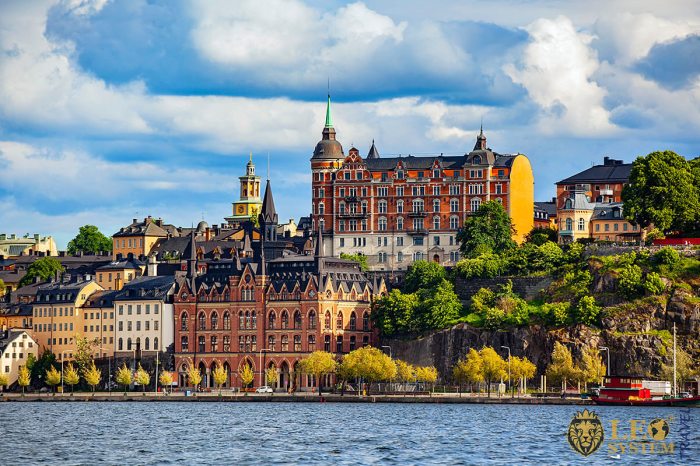
The newest room at Sweden Treehotel, crafted from 350 meticulously designed bird boxes, showcases a profound commitment to environmental responsibility. This innovative approach to design not only enhances the guest experience but also fosters a harmonious coexistence with the natural world. The integration of bird boxes, coupled with sustainable construction practices, exemplifies the hotel’s dedication to minimizing its ecological footprint.This room’s design prioritizes ecological balance and showcases a model for sustainable tourism.
By integrating bird boxes into the structure, the hotel actively supports local bird populations, reducing its carbon footprint, and showcasing the potential of nature-inspired design in hospitality. The sustainable materials and construction techniques used in this room represent a crucial step towards a greener future.
Environmental Benefits of Bird Boxes
The incorporation of bird boxes directly contributes to the local ecosystem’s health. Bird boxes provide essential nesting sites for various species, fostering the reproduction and survival of birds. This supports the natural food chain and helps maintain the ecological balance within the region. Providing nesting sites is crucial for maintaining bird populations, which play an important role in seed dispersal and pest control.
Sustainability Measures in Construction and Materials
The design meticulously considers sustainable practices throughout the construction process. Locally sourced, reclaimed, or recycled materials are used whenever possible. This minimizes the environmental impact of transportation and reduces reliance on virgin resources. Furthermore, the room’s construction emphasizes energy efficiency, minimizing the building’s energy consumption through the use of advanced insulation and optimized HVAC systems.
Sustainable Practices in the Hotel and Area
Sweden Treehotel actively promotes various sustainable practices beyond this new room. The hotel utilizes renewable energy sources, like solar panels, to power its operations, reducing its carbon emissions. They also collaborate with local communities and businesses to source materials and support the surrounding environment. This comprehensive approach extends beyond the room itself, embodying a broader commitment to sustainability within the entire hotel operation.
Potential Impact on Local Bird Populations
The presence of 350 bird boxes in the room is expected to significantly benefit local bird populations. By providing ample nesting sites, the room acts as a haven for various bird species, increasing their breeding success rates. The strategic placement of the boxes, likely considering local bird species preferences, maximizes their effectiveness in supporting these populations. This positive impact is expected to contribute to the long-term health and diversity of the local avian ecosystem.
Rationale for Choosing Bird Boxes
The selection of bird boxes over other sustainable design features is based on their demonstrable impact on a specific aspect of the local environment. While other sustainable design choices are important, bird boxes offer a direct, tangible benefit to local bird populations. Their presence is a visible testament to the hotel’s commitment to preserving biodiversity. This tangible connection with nature reinforces the core values of the hotel.
Comparison of Environmental Impact
| Feature | Conventional Hotel Room | Bird Box Room |
|---|---|---|
| Material Sourcing | Typically involves significant transportation, often from distant sources | Emphasizes locally sourced, reclaimed, or recycled materials |
| Energy Consumption | Potentially high due to HVAC and lighting systems | Focuses on energy efficiency with advanced insulation and optimized systems |
| Water Usage | Potentially high for cleaning and other uses | Emphasizes water conservation through efficient fixtures and practices |
| Waste Generation | Significant waste generation from disposable items | Minimizes waste through reusable materials and composting initiatives |
| Biodiversity Impact | Limited direct impact on local ecosystems | Directly supports local bird populations, increasing biodiversity |
Guest Experience and Functionality: Sweden Treehotel Newest Room Is Made Up Of 350 Bird Boxes
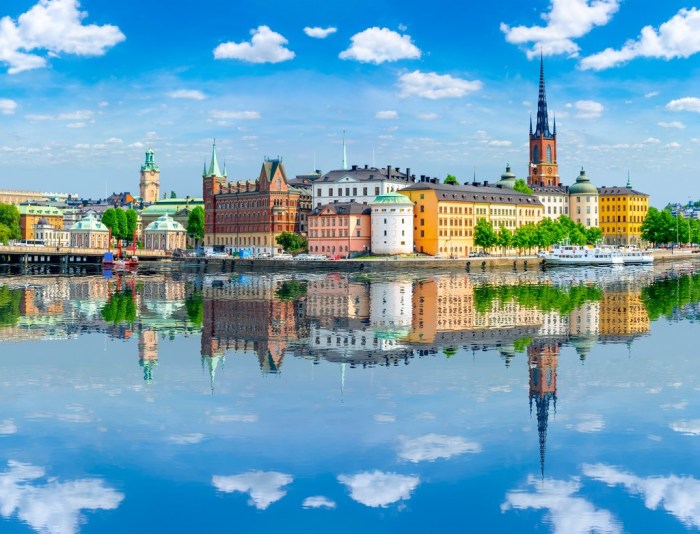
The Sweden Treehotel’s newest room, constructed from 350 interconnected bird boxes, presents a unique opportunity to redefine the guest experience. Beyond the architectural marvel, the design must prioritize a positive and memorable stay for visitors while maintaining the natural harmony of the surrounding ecosystem. This entails careful consideration of the guest experience, the functionality of the bird boxes, and the integration of interactive elements related to birdwatching.This innovative design, while visually stunning, demands a nuanced approach to guest interaction.
Sweden’s Treehotel just unveiled a new room, packed with 350 bird boxes! It’s an amazing example of sustainable design, but if you’re looking for more Parisian inspiration, check out some of the best restaurants, fashion spots, and museums that anya firestone paris tips restaurants fashion museums recommends. Seriously, the detail in this new room is incredible, highlighting the importance of nature in architecture, even in a unique treehouse hotel setting.
The design needs to foster a connection with nature without disturbing the delicate balance of the local ecosystem. The experience should be both engaging and respectful, offering a unique perspective on the world around us.
Potential Guest Experience
The potential guest experience within the bird box room is a fascinating blend of tranquility and interaction. Guests can enjoy panoramic views of the forest from their elevated position, experiencing nature’s rhythm firsthand. The interconnected network of bird boxes could offer an almost immersive experience, akin to being part of a living, breathing structure. Imagine waking up to the symphony of birdsong, the soft rustle of leaves, and the gentle breeze carrying the scent of pine and moss.
This sensory experience can be enhanced by strategically placed viewing points and natural lighting to maximize the visual appeal of the forest.
Benefits and Drawbacks of the Bird Box Feature
The unique bird box feature offers numerous benefits. It provides a remarkable opportunity for guests to witness the intricate life of birds in their natural habitat. Furthermore, the elevated position can offer unprecedented views of the surrounding environment. However, drawbacks must also be considered. Potential issues include the maintenance of the bird boxes and the room’s hygiene.
The delicate balance of the ecosystem within the forest needs to be carefully considered to prevent disturbance. This includes understanding how the bird boxes might impact the local bird population and the surrounding wildlife.
Encouraging Interactions with Surrounding Nature
The room can encourage interactions with nature by incorporating interactive elements, such as bird feeders strategically placed around the bird boxes. These feeders could be controlled by the guests, allowing them to adjust the type of food offered based on the observed preferences of the birds. Additionally, bird identification guides and binoculars can be made readily available within the room.
This approach fosters a more active participation in appreciating the surrounding ecosystem.
Interactive Elements Related to Birdwatching
To enhance the birdwatching experience, interactive displays could be integrated into the room. These could include digital screens showing real-time bird sightings in the area, audio recordings of bird calls, and information about the local bird species. These elements would enrich the guest’s understanding and appreciation of the natural world. Educational materials about the forest’s biodiversity could also be provided.
This will not only increase awareness but also contribute to a deeper understanding of the region’s natural heritage.
Maintaining Bird Boxes and Room Hygiene
Maintaining the bird boxes and the room’s hygiene is crucial for the overall experience. Regular cleaning and maintenance schedules are essential to prevent the buildup of bird droppings and other debris. This could involve a system of cleaning the bird boxes at pre-determined intervals, ensuring the health and well-being of the birds and the cleanliness of the room.
Sweden’s Treehotel just unveiled its newest room, a marvel of 350 bird boxes! It’s fascinating to see how this design pushes the boundaries of nature-inspired architecture. Speaking of unique accommodations, have you explored the hidden gems of Costa Rica? Discovering local favorites like the vibrant markets and stunning rainforests in places locals love in costa rica is a must-do.
The meticulous detail in the Treehotel’s birdhouse-laden room is equally impressive.
Furthermore, the room should be equipped with appropriate sanitation facilities to maintain the desired level of hygiene. The design of the room must take into account the need for regular cleaning and maintenance.
Possible Guest Activities and Amenities
| Activity | Description | Amenity |
|---|---|---|
| Birdwatching | Observing birds using binoculars and guides | Binoculars, bird identification guides, bird feeders |
| Nature Photography | Capturing images of birds and the surrounding landscape | High-quality cameras, tripods, memory cards |
| Educational Sessions | Learning about local bird species and their habitats | Guided tours, presentations, educational materials |
| Interactive Displays | Observing real-time bird sightings and audio recordings | Digital screens, audio equipment |
| Relaxation | Enjoying the sounds and views of the forest | Comfortable seating, ambient lighting |
Marketing and Public Relations
The unique birdhouse-themed room at the Sweden Treehotel presents a compelling marketing opportunity. Leveraging its distinctive feature will be crucial to attract both general tourists and specialized niches, such as birdwatchers. A well-defined marketing strategy, incorporating a strong visual identity and targeted collaborations, can significantly enhance the room’s visibility and appeal.
Potential Marketing Strategies
A multi-faceted approach is vital for maximizing the room’s reach. This involves crafting compelling narratives that highlight the experience’s uniqueness and focusing on targeted marketing campaigns. This should encompass online and offline strategies to create a comprehensive and engaging marketing ecosystem.
Highlighting the Bird Box Feature
Promotional materials should prominently showcase the bird boxes, emphasizing their intricate design and ecological contribution. High-quality photographs and videos are essential to convey the artistry and detail of the structure. For instance, time-lapse videos showing birds interacting with the boxes would be highly engaging. Furthermore, consider showcasing the room’s design alongside educational information about local bird species, creating a deeper connection with the environment.
Generating Interest from Birdwatching Enthusiasts
Birdwatching enthusiasts are a highly engaged audience. Reaching them requires targeted marketing through specialized birdwatching websites, social media groups, and partnerships with birding organizations. Collaborating with birding influencers and hosting events tailored to birdwatching communities can generate substantial interest. For example, offering discounts or exclusive experiences for members of birdwatching clubs would be a strategic approach.
Creating Compelling Visuals
The visual representation of the room is paramount. Photos should highlight the intricate details of the bird boxes and the natural surroundings. 360° virtual tours would provide an immersive experience, allowing potential guests to explore the room from every angle. Moreover, creating short, engaging videos showcasing the unique experience and the beauty of the surrounding nature will effectively communicate the room’s appeal.
These visuals should capture the room’s aesthetic, the natural ambiance, and the interactions with birds.
Social Media Strategy
A dedicated social media strategy is essential for building anticipation and generating buzz. Posting high-quality images and videos showcasing the bird boxes and the surrounding environment is key. Running contests or giveaways, collaborating with travel influencers, and engaging with birdwatching communities on platforms like Instagram and Twitter are effective methods. Furthermore, consider live streams showcasing birds interacting with the boxes, fostering a sense of community and authenticity.
Promotional Partnerships
| Partner Category | Potential Partner Examples | Rationale |
|---|---|---|
| Nature Organizations | Birdwatching societies, environmental conservation groups, local nature reserves | These organizations have established audiences and credibility, facilitating the reach to birdwatching enthusiasts and environmental advocates. |
| Travel Agencies | Specialized nature travel agencies, luxury travel companies | Collaborations with travel agencies can significantly expand the reach to potential clients, creating more visibility and accessibility. |
| Sustainability Focused Brands | Eco-friendly accommodation providers, brands committed to environmental protection | Partnerships with environmentally conscious brands can enhance the room’s perceived sustainability and appeal to a specific target audience. |
Historical Context and Inspiration
The Treehotel’s newest room, crafted from 350 repurposed birdhouses, stands as a testament to a rich history of nature-inspired design. This innovative approach blends the practical functionality of birdhouses with the artistry of modern architecture, drawing inspiration from centuries of human fascination with the natural world. This project delves into the historical significance of birdhouses, the enduring appeal of nature-inspired design, and the unique connection between the bird boxes and the surrounding environment.
History of Birdhouses
Birdhouses, far from being a modern invention, have a long and fascinating history. They’ve served both practical and symbolic purposes across various cultures. From providing shelter for birds to acting as decorative elements, birdhouses represent a deep-rooted connection to nature.
“Birdhouses have been found in archaeological digs dating back to ancient civilizations, highlighting their enduring role in human-nature interaction.”
Early birdhouses, often rudimentary structures, reflected the simple needs of birds and the skills of the craftspeople of the time. As craftsmanship advanced, birdhouses evolved, becoming more elaborate and intricate, often incorporating cultural and artistic elements. Their presence in gardens and yards has been a common practice for centuries, demonstrating our enduring desire to nurture and observe the natural world.
Nature-Inspired Design in Architecture
Nature-inspired design has consistently influenced architectural aesthetics and functionality. From the organic forms of ancient structures to the modern interpretations of natural elements, this connection speaks to a fundamental human desire to be in harmony with the environment.
“The use of natural forms and materials in architecture has been a constant theme throughout history, demonstrating a fundamental human connection to the natural world.”
Examples abound. The use of natural light and ventilation in traditional dwellings, the integration of trees and foliage in landscaping, and the adoption of biomimicry in contemporary structures are all testaments to this influence. This design philosophy recognizes the intrinsic beauty and efficiency of nature, translating these characteristics into architectural solutions.
Examples of Similar Projects
Several projects have incorporated similar concepts. Many contemporary buildings feature designs inspired by natural forms, incorporating elements like flowing lines, organic shapes, and natural materials. There’s a growing appreciation for the use of sustainable materials, and the integration of nature within urban spaces. The Treehotel, itself, is a prime example, demonstrating a commitment to both environmental consciousness and innovative design.
Historical or Cultural References
The design of the birdhouse room likely incorporates historical or cultural references, perhaps reflecting specific regional styles or traditions related to birdwatching or nature conservation. This could involve specific bird species or designs that hold significance in the region.
“Historical and cultural contexts can be significant influences in design, often embedded in symbolism and patterns that reflect specific cultural values.”
The integration of birdhouses into the structure might also symbolize the importance of biodiversity and ecological balance.
Connection to the Surrounding Environment
The 350 birdhouses are not simply an aesthetic element; they’re designed to enhance the natural environment. The placement and design of the birdhouses likely take into account the needs of local bird species and the surrounding ecosystem. This conscious integration underscores the room’s commitment to ecological harmony. By understanding the environmental impact, the Treehotel aims to provide a unique experience while respecting the natural world.
Technical Aspects and Challenges
The intricate design of Sweden TreeHotel’s newest room, featuring 350 bird boxes, presents unique technical challenges. Careful consideration of structural integrity, maintenance logistics, guest safety, and environmental impact is paramount. Addressing these aspects will ensure a harmonious coexistence between the hotel’s innovative design and the well-being of both guests and the avian inhabitants.
Structural Support for Bird Boxes
The bird boxes, varying in size and weight, necessitate a robust and adaptable structural framework. The design must accommodate the weight of each box, considering the potential for accumulated bird droppings and the overall stress on the supporting framework. Engineers employed finite element analysis (FEA) to model the stresses on various support configurations, ensuring structural integrity under different load scenarios.
This process involves meticulous calculations and simulations to prevent potential damage or collapse.
Logistics of Maintaining Bird Boxes
Regular maintenance of the bird boxes is essential for hygiene and the continued health of the birds. This includes periodic cleaning, pest control, and potential repairs. The design must incorporate easily accessible maintenance points without disturbing the birds’ habitat. This might involve strategically placed platforms or retractable walkways for maintenance personnel. A schedule for regular inspections and cleaning will be developed, ensuring the bird boxes remain in optimal condition.
Preventing Bird Droppings Impacting Interior Design, Sweden treehotel newest room is made up of 350 bird boxes
The large number of bird boxes necessitates a meticulous approach to mitigating bird droppings. The design will incorporate materials resistant to stains and discoloration, such as specialized coatings and water-resistant paints. Furthermore, strategically placed gutters and drainage systems will divert potential droppings away from the interior. This is crucial for maintaining the room’s aesthetic appeal and ensuring a comfortable guest experience.
Safety Measures for Guests Interacting with Bird Boxes
Guest safety is paramount. Clear signage and warnings will be displayed regarding the presence of birds and their nesting boxes. The design will minimize the risk of accidental contact or disturbance to the birds. Furthermore, the placement of bird boxes will prevent guests from climbing or reaching for the boxes directly. This will ensure a safe and enjoyable experience for all guests.
Technical Challenges and Solutions
| Technical Challenge | Solution |
|---|---|
| Structural support for 350 bird boxes | FEA analysis to model stress and support configurations, using high-strength, lightweight materials. |
| Maintenance logistics | Strategically placed access points, retractable walkways, and scheduled cleaning protocols. |
| Bird droppings impact on interior design | Waterproof coatings, stain-resistant materials, and drainage systems. |
| Guest safety around bird boxes | Clear signage, warnings, and careful placement to prevent contact. |
Closing Summary
In conclusion, Sweden Treehotel’s new room, composed entirely of 350 bird boxes, represents a bold step towards a more harmonious relationship between humans and nature. The design’s innovative approach to sustainability, guest experience, and architectural integration promises a unique and unforgettable stay. While challenges like maintenance and hygiene must be addressed, the potential for environmental benefits and captivating guest experiences is undeniable.
This innovative project serves as a compelling example of how creative design can foster a deeper appreciation for the natural world.
